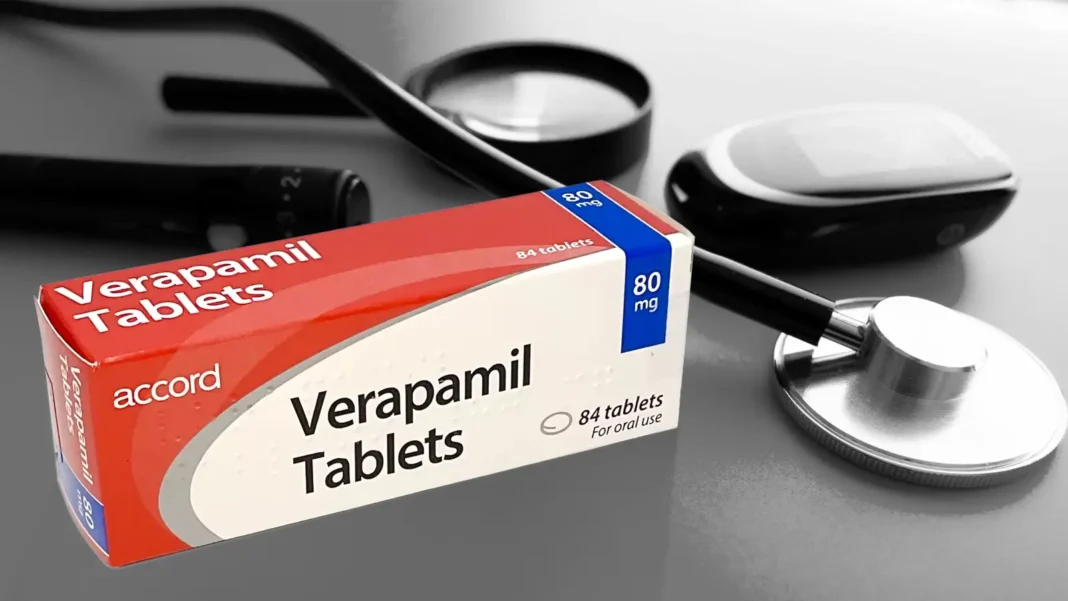Outline
-
Introduction
- Brief introduction.
- Importance in medical treatments.
- Overview of the article.
-
What is Verapamil?
- Definition and classification.
- Chemical structure.
- Mechanism of action.
-
Uses
- Treatment of hypertension.
- Management of angina.
- Use in arrhythmias.
- Other medical applications.
-
Dosage and Administration
- Typical dosages for different conditions.
- Forms (tablets, injections, etc.).
- Guidelines for use.
-
Side Effects and Precautions
- Common side effects.
- Serious side effects and when to seek medical help.
- Precautions (e.g., interactions with other drugs).
-
Conclusion
- Summary of key points.
- Final thoughts on the importance and usage.
-
FAQs
- Common questions.
- Brief answers to each question.
What is Verapamil?
Verapamil is a medication that falls under the category of calcium channel blockers. It is widely used in the medical field to manage various cardiovascular conditions. The chemical structure of this allows it to inhibit the influx of calcium ions into cardiac and smooth muscle cells, which leads to a relaxation of these muscles and a subsequent decrease in blood pressure. By blocking calcium channels, they effectively reduces the workload on the heart and helps to prevent abnormal heart rhythms.
Uses of Verapamil
Verapamil is primarily prescribed for the treatment of hypertension (high blood pressure), making it an essential drug in cardiovascular therapy. It is also used to manage angina (chest pain) by improving blood flow to the heart muscle. In addition, Verapamil is effective in treating certain types of arrhythmias (irregular heartbeats) by stabilizing the electrical activity of the heart. Beyond these primary uses, they may also be prescribed for other conditions as determined by a healthcare provider, such as cluster headaches and certain types of migraines.
Conclusion
In summary, Verapamil is a versatile and essential medication in the management of various cardiovascular conditions. Its ability to block calcium channels makes it effective in treating hypertension, angina, and arrhythmias, among other conditions. While generally well-tolerated, it is important for patients to be aware of potential side effects and to follow their healthcare provider’s instructions carefully. They continues to be a valuable tool in improving the quality of life for patients with cardiovascular diseases.
FAQs
Q: What should I do if I miss a dose of Verapamil? A: If you miss a dose of Verapamil, take it as soon as you remember. If it is almost time for your next dose, skip the missed dose and resume your regular schedule. Do not take a double dose to make up for the missed one.
Q: Can I consume alcohol while taking this? A: It is advisable to avoid alcohol while taking Verapamil, as it can increase the risk of side effects such as dizziness and lightheadedness.
Q: Are there any medications that should not be taken with Verapamil? A: Yes, there are several medications that can interact with Verapamil, including certain beta-blockers, digoxin, and some antiarrhythmic drugs. Always inform your healthcare provider of all medications and supplements you are taking.
Q: How long does it take for this to start working? A: Verapamil may start to work within a few hours, but it can take several days to achieve its full effect. It is important to take it regularly as prescribed for the best results.
Q: Can pregnant women take Verapamil? A: This should only be used during pregnancy if clearly needed and prescribed by a healthcare provider. Discuss any potential risks and benefits with your doctor.

